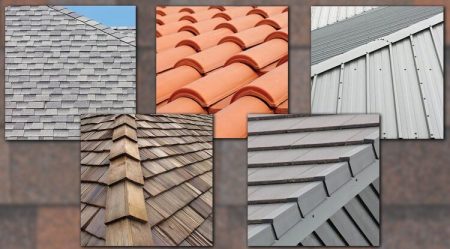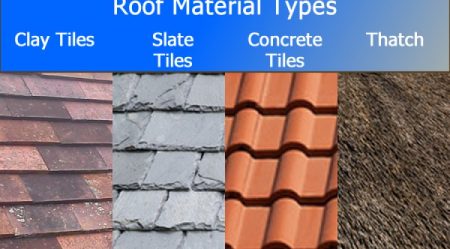Contents
- 1 Advantages and Disadvantages of Popular Roof Coverings
- 1.1 Table of Contents
- 1.2 1. Introduction
- 1.3 2. Asphalt Shingles
- 1.4 3. Metal Roofs
- 1.5 4. Clay Tiles
- 1.6 5. Concrete Tiles
- 1.7 6. Slate Roofs
- 1.8 7. Wood Shakes and Shingles
- 1.9 8. Rubber Roofs
- 1.10 9. PVC Membrane Roofs
- 1.11 10. TPO Roofs
- 1.12 11. EPDM Roofs
- 1.13 12. Green Roofs
- 1.14 13. Coatings
- 1.15 14. Comparison Table
- 1.16 15. Conclusion
- 1.17 16. FAQs
Advantages and Disadvantages of Popular Roof Coverings
When it comes to choosing the right roofing material for your home or building, there are several options available. Each material has its advantages and disadvantages. It is essential to consider these factors before making a decision on which roof covering will suit your needs.
In this article, we will explore the most popular types of roof coverings, their benefits, and drawbacks.
Table of Contents
- Introduction
- Asphalt Shingles
- Metal Roofs
- Clay Tiles
- Concrete Tiles
- Slate Roofs
- Wood Shakes and Shingles
- Rubber Roofs
- PVC Membrane Roofs
- TPO Roofs
- EPDM Roofs
- Green Roofs
- Coatings
- Comparison Table
- Conclusion
- FAQs
1. Introduction
The roof is one of the most critical components of any building, protecting the structure from the elements. Choosing the right type of roof covering is essential to ensure the longevity and durability of the roof over time. Let us explore the different types of roof coverings and their pros and cons.
2. Asphalt Shingles
Asphalt shingles are the most popular roofing material in North America. They are made of fiberglass mats coated with asphalt and mineral granules.
Advantages
- Affordable
- Easy to install
- Available in a wide range of colors and styles
- Durable with a lifespan of up to 30 years
Disadvantages
- Not eco-friendly
- Prone to damage from extreme weather conditions
- May require regular maintenance
3. Metal Roofs
Metal roofs have become increasingly popular due to their durability and energy efficiency. They can be made from various materials such as steel, aluminum, copper, and zinc.
Advantages
- Long lifespan of up to 50 years or more
- Highly durable and resistant to weather conditions such as hail and wind
- Energy-efficient, reflecting heat and reducing cooling costs
Disadvantages
- Higher initial cost compared to other roofing materials
- May require professional installation
- Noise may be an issue during heavy rainfall or hailstorms
4. Clay Tiles
Clay tiles have been used for roofing for thousands of years and are still popular today.
Advantages
- Attractive and available in a variety of colors
- Durable with a lifespan of up to 100 years
- Resistant to fire, insects, and rot
Disadvantages
- Heavy, requiring additional support structures
- Fragile and prone to damage from walking or falling objects
- Expensive compared to other roofing materials
5. Concrete Tiles
Concrete tiles are similar to clay tiles but are made of cement, sand, and water.
Advantages
- Durable and long-lasting, with a lifespan of up to 50 years
- Available in many styles and colors
- Resistant to fire, insects, and rot
Disadvantages
- Heavy, requiring additional support structures
- More expensive than asphalt shingles
- Can crack under extreme temperatures
6. Slate Roofs
Slate is a natural stone material that has been used in roofing for centuries.
Advantages
- Beautiful and unique appearance
- Long lifespan of up to 100 years
- Resistant to fire, insects, and rot
Disadvantages
- Heavy and requires additional support structures
- Expensive compared to other roofing materials
- Can be fragile and prone to cracking
7. Wood Shakes and Shingles
Wood shakes and shingles are made from cedar, redwood, or other types of wood.
Advantages
- Attractive and rustic appearance
- Energy-efficient, providing natural insulation
- Biodegradable and eco-friendly
Disadvantages
- Prone to rot, mold, and insects
- May require regular maintenance and treatment
- Lower lifespan compared to other roofing materials
8. Rubber Roofs
Rubber roofs are made of either EPDM or TPO material.
Advantages
- Durable with a lifespan of up to 50 years
- Resistant to weather conditions such as hail and wind
- Easy to install
Disadvantages
- Can be expensive compared to other roofing materials
- Not very attractive and may lower the curb appeal
- May require more maintenance than other materials
9. PVC Membrane Roofs
- as durable as other roofing materials, with a lifespan of up to 20 years
- Can be more expensive compared to other roofing materials
10. TPO Roofs
Thermoplastic Olefin (TPO) roofs are made of a single-ply membrane.
Advantages
- Durable and long-lasting, with a lifespan of up to 30 years
- Resistant to weather conditions such as hail and wind
- Energy-efficient, reflecting heat and reducing cooling costs
Disadvantages
- May be prone to punctures and damage from falling objects
- Not as strong as other roofing materials
- May require regular maintenance
11. EPDM Roofs
Ethylene Propylene Diene Monomer (EPDM) roofs are made of a synthetic rubber material.
Advantages
- Durable with a lifespan of up to 50 years
- Resistant to weather conditions such as hail and wind
- Easy to install
Disadvantages
- Can be expensive compared to other roofing materials
- May shrink over time, causing leaks
- Not very attractive and may lower the curb appeal
12. Green Roofs
Green roofs are covered in vegetation and provide environmental benefits such as reducing stormwater runoff and improving air quality.
Advantages
- Improved energy efficiency, reducing heating and cooling costs
- Increased lifespan of the roof due to the protective layer of vegetation
- Improved aesthetic appeal and can add value to a property
Disadvantages
- High initial cost due to the complex installation process
- Requires regular maintenance and irrigation
- Can be heavy and require additional structural support
13. Coatings
Roof coatings are applied to existing roofs to improve durability and prolong the lifespan.
Advantages
- Can extend the lifespan of a roof for up to 20 years
- Reflective coatings can reduce cooling costs
- Easy to apply and can be DIY
Disadvantages
- May not be suitable for severely damaged roofs
- May not be as effective as other roofing materials in extreme weather conditions
- May require reapplication every few years
14. Comparison Table
| Roof Covering | Advantages | Disadvantages |
|---|---|---|
| Asphalt Shingles | Affordable, easy to install, available in different colors and styles, durable | Not eco-friendly, prone to damage from weather conditions, may require regular maintenance |
| Metal Roofs | Long lifespan, highly durable, energy-efficient | Higher initial cost, may require professional installation, noise during heavy rainfall or hailstorms |
| Clay Tiles | Attractive, long lifespan, resistant to fire, insects, and rot | Heavy, fragile, expensive |
| Concrete Tiles | Durable, available in many styles and colors, resistant to fire, insects, and rot | Heavy, more expensive than asphalt shingles, can crack under extreme temperatures |
| Slate Roofs | Beautiful and unique appearance, long lifespan, resistant to fire, insects, and rot | Heavy and requires additional support structures, expensive, can be fragile and prone to cracking |
| Wood Shakes and Shingles | Attractive and rustic appearance, energy-efficient, biodegradable and eco-friendly | Prone to rot, mold, and insects, may require regular maintenance and treatment, lower lifespan compared to other roofing materials |
| Rubber Roofs | Durable, resistant to weather conditions, easy to install | Can be expensive, not very attractive, may require more maintenance than other materials |
| PVC Membrane Roofs | Lightweight, energy-efficient, resistant to chemicals and pollutants | May be prone to punctures and damage from falling objects, not as durable as other roofing materials, can be more expensive |
| TPO Roofs | Durable, resistant to weather conditions, energy-efficient | May be prone to punctures and damage from falling objects, not as strong as other roofing materials, may require regular maintenance |
| EPDM Roofs | Durable, resistant to weather conditions, easy to install | Can be expensive, may shrink over time causing leaks, not very attractive |
| Green Roofs | Improved energy efficiency, increased lifespan of the roof, improved aesthetic appeal | High initial cost, requires regular maintenance and irrigation, can be heavy |
| Coatings | Can extend the lifespan of a roof, reflective coatings can reduce cooling costs, easy to apply | May not be suitable for severely damaged roofs, may not be as effective in extreme weather conditions, may require reapplication every few years |
15. Conclusion
Choosing the right type of roof covering is crucial for the longevity and durability of your roof. Each material has its advantages and disadvantages, so it is essential to consider factors such as budget, climate, and aesthetic appeal before making a decision.
16. FAQs
- What is the most popular type of roofing material?
Asphalt shingles are the most popular roofing material in North America.2. What is the most durable roofing material?
Slate roofs have a lifespan of up to 100 years, making them one of the most durable roofing materials.3. Are green roofs expensive?
Yes, green roofs are typically more expensive than traditional roofing materials due to the complexity of installation and required irrigation and maintenance.4. Can roof coatings be applied to any type of roof?
Roof coatings may not be suitable for severely damaged roofs and may not be as effective in extreme weather conditions.5. Which roofing material is the most eco-friendly?
Wood shakes and shingles are considered the most eco-friendly roofing material as they are biodegradable and renewable.How to Choose the Right Roofing Coating? You can find the related article here






